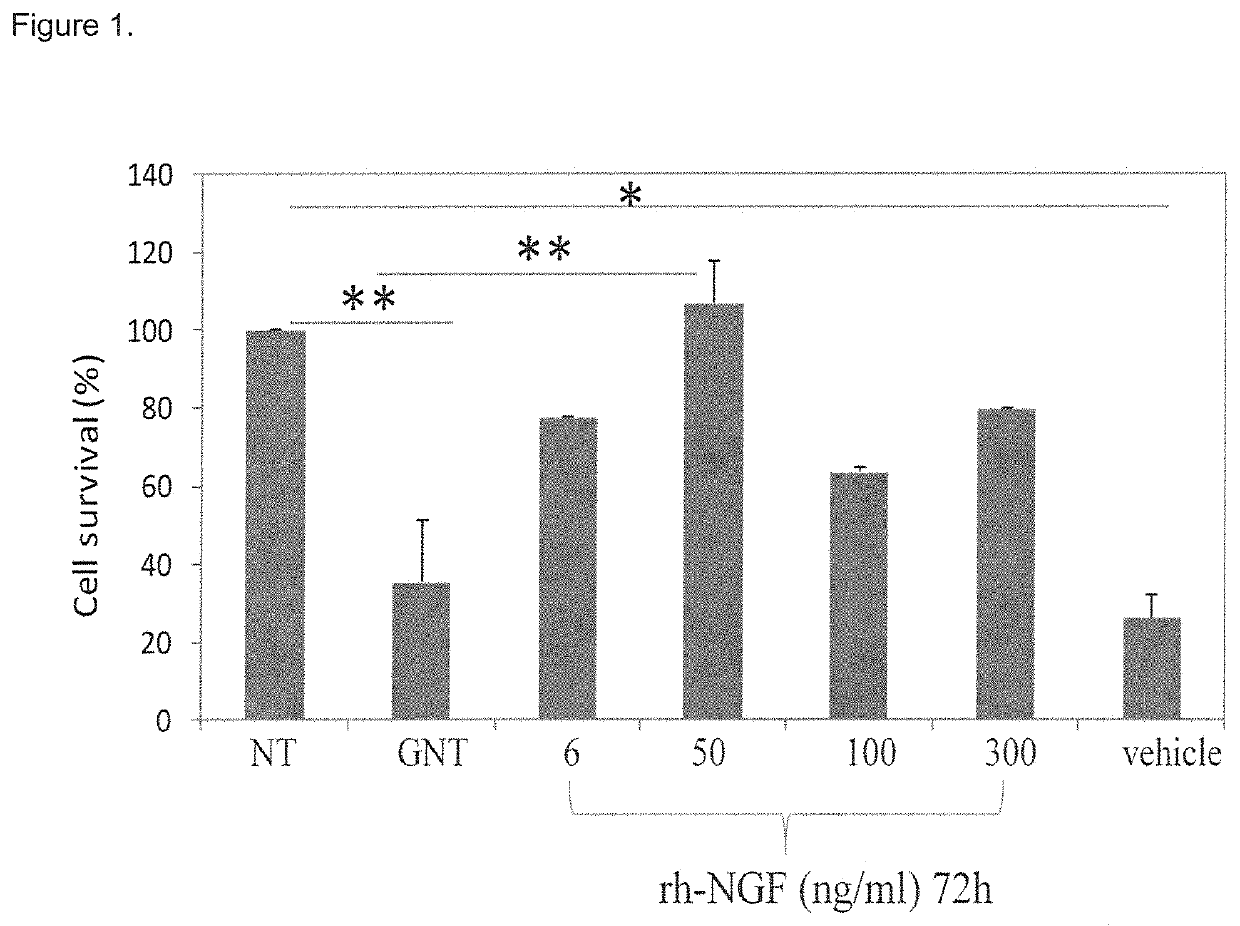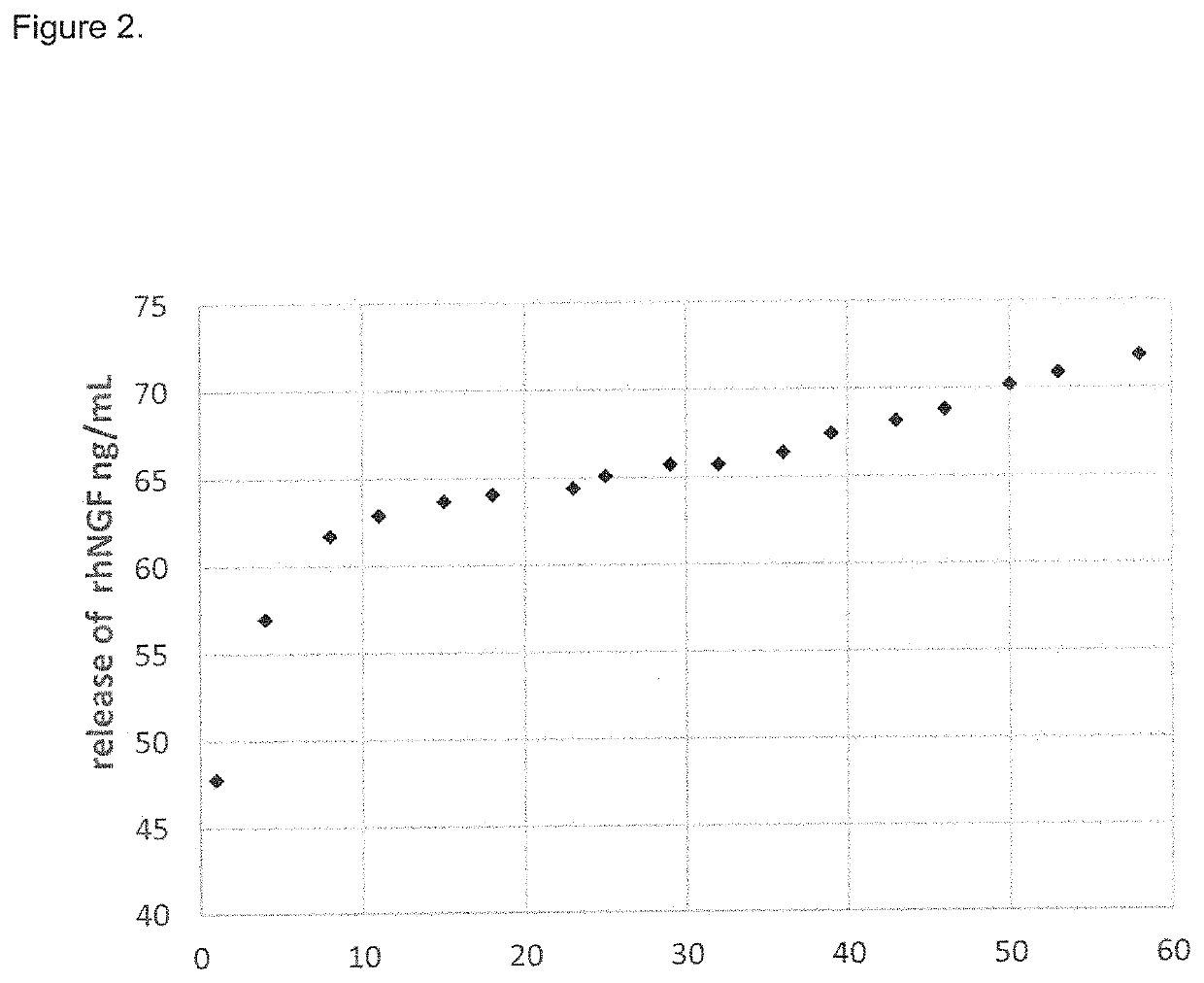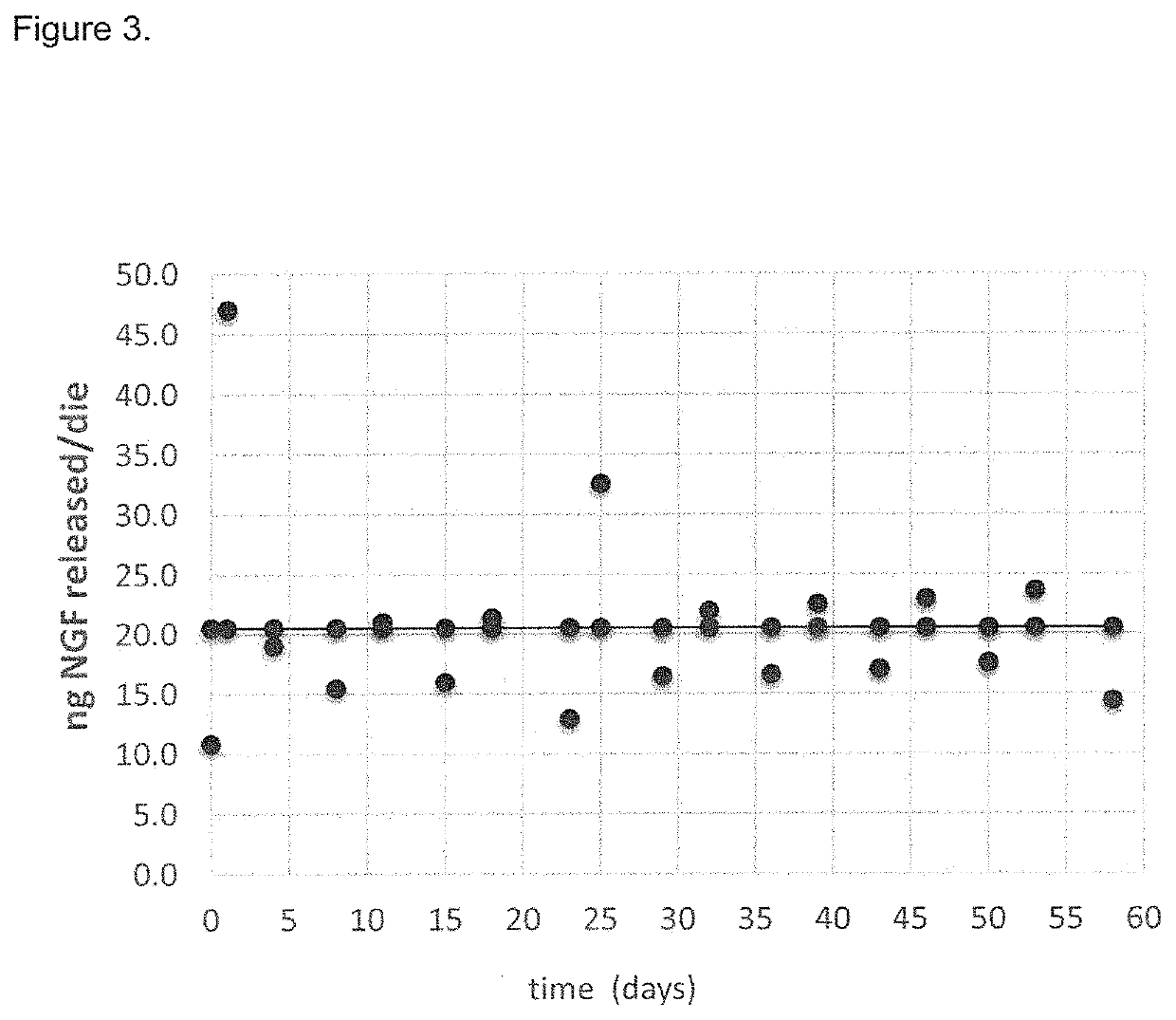Neurotrophins for use in the treatment of hearing loss
a neurotrophin and hearing loss technology, applied in the direction of drug compositions, peptide/protein ingredients, senses disorders, etc., can solve the problems of reducing the usefulness of antimicrobial agents, prolonging the lag time, and limiting the therapeutic usefulness of these drugs
- Summary
- Abstract
- Description
- Claims
- Application Information
AI Technical Summary
Benefits of technology
Problems solved by technology
Method used
Image
Examples
Embodiment Construction
[0031]It was surprisingly found that the local neurotrophin delivery approach including the intratympanic administration, that limits systemic exposure, is particularly promising in the treatment of hearing loss, because it allows the neurotrophin to reach adequate therapeutic levels into the inner ear, particularly in the intra labyrinthique region, faster and at higher concentrations.
[0032]This route of administration provides for better results than other common routes, such as intravenous or oral administration. The obtained results are imputable to the neurotrophin activity in restoring hair cells viability after gentamicin treatment, and to the transtympanic administration leading to a good distribution of neurotrophin into the cochlea.
[0033]In particular, the experimental data reported in the present invention shows that the transtympanic administration of rhNGF is able to regenerate the inner ear tissue, particularly the inner ear epithelial hair cells, and therefore represe...
PUM
| Property | Measurement | Unit |
|---|---|---|
| concentration | aaaaa | aaaaa |
| concentration | aaaaa | aaaaa |
| concentration | aaaaa | aaaaa |
Abstract
Description
Claims
Application Information
 Login to View More
Login to View More - R&D
- Intellectual Property
- Life Sciences
- Materials
- Tech Scout
- Unparalleled Data Quality
- Higher Quality Content
- 60% Fewer Hallucinations
Browse by: Latest US Patents, China's latest patents, Technical Efficacy Thesaurus, Application Domain, Technology Topic, Popular Technical Reports.
© 2025 PatSnap. All rights reserved.Legal|Privacy policy|Modern Slavery Act Transparency Statement|Sitemap|About US| Contact US: help@patsnap.com



